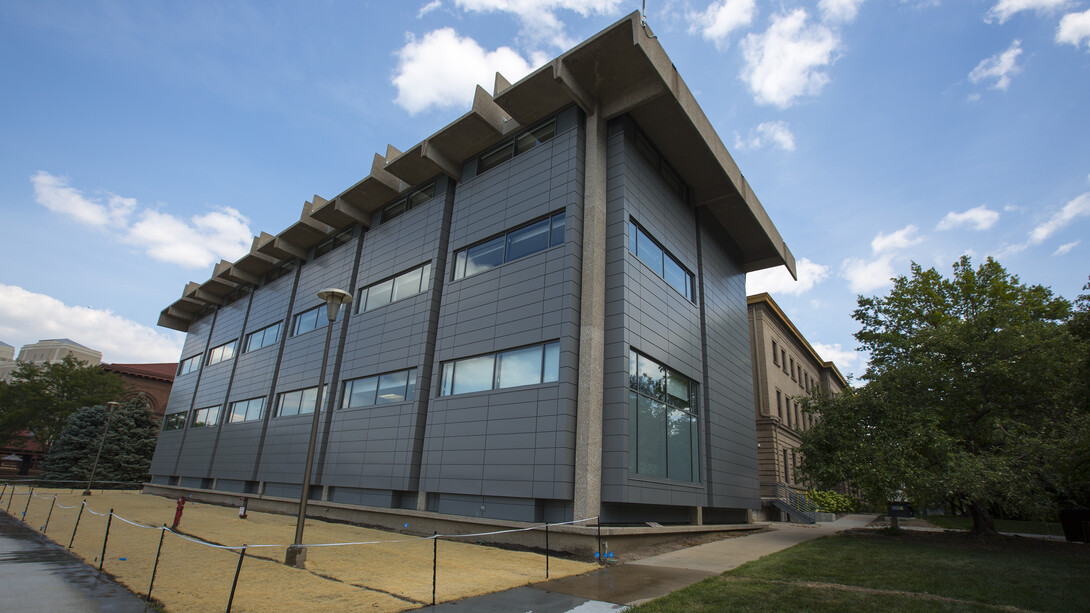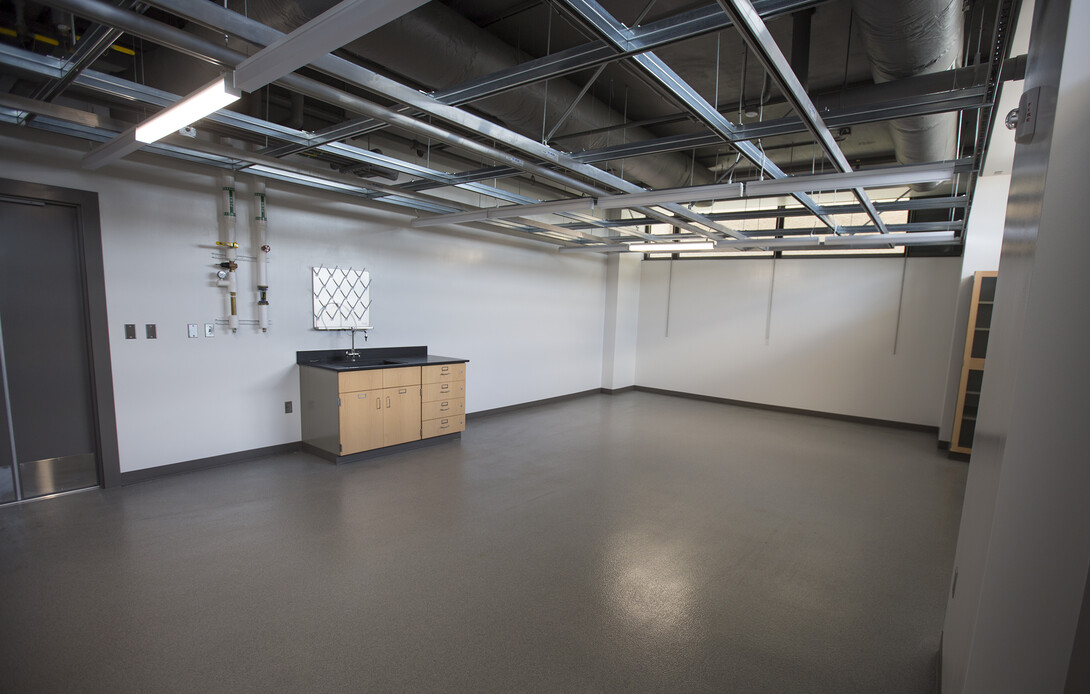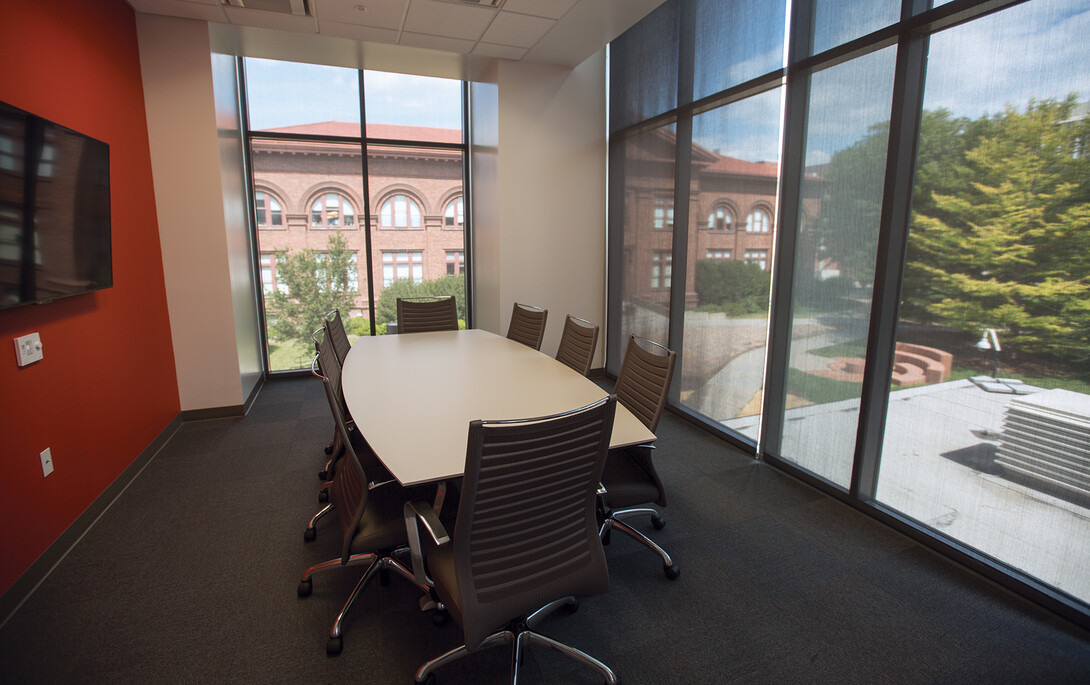
A remodel of Behlen Laboratory is allowing the University of Nebraska–Lincoln to step up research aimed at strengthening national defense.
Dedicated in 1965 as an expansion to physics teaching and once on a university list of buildings considered for demolition, Behlen Laboratory has been transformed into a flexible and modern research facility with six dedicated lab spaces, conference rooms and support areas. Alongside ongoing exploration in Nebraska’s Extreme Light Laboratory — which is located in the basement and sub-basement of Behlen — the new design allows for research projects that demand higher levels of security, like those funded by the Department of Defense and private industry.
Projects related to the University of Nebraska’s National Strategic Research Institute, a partnership with United States Strategic Command dedicated to combating weapons of mass destruction, are expected to be featured additions to the new Behlen labs. The institute is one of the nation’s 13 University Affiliated Research Center partnerships with the U.S. Department of Defense.
“Behlen Laboratory is Nebraska’s new home to critical research that will contribute to efforts to protect our nation and armed forces,” said Chancellor Ronnie Green. “This renovation was important because it offers Nebraska researchers modern tools and flexible spaces they need to support and contribute to national defense efforts.”

As the university worked to shift physics and astronomy instruction to Jorgensen Hall in 2010, Behlen and Ferguson Hall — as former homes to the department — were considered for demolition. However, Prem Paul, then Nebraska’s vice chancellor for research and economic development, championed a push to rethink the use of Behlen.
“In 2006, we invested millions of dollars into the expansion of laser research in Behlen and it would have been a waste of resources to relocate the laser lab,” said Mike Zeleny, associate vice chancellor for research and economic development. “Prem had vision for us to think bigger, which led to the university transforming Behlen into dedicated space for defense-related research, a key growth area for Nebraska research.”
The renovation, which started in 2012, features a complete redesign of the interior and exterior of the building.
Most of the exterior façade — which was primarily precast concrete in the Brutalist style, a form of late modernism introduced after World War II — has been replaced with a modern skin of glass and metal. The exterior renovation also relocated heating, cooling and other mechanical systems from below and around windows, adding square footage to the interior of the building.
Take a photo tour of the newly designed Behlen Laboratory of Physics.
Including the Extreme Light Laboratory, total space in Behlen Laboratory is 32,095 gross square feet. The renovation of the three top floors includes 19,000 square feet of space that was completely stripped down to concrete pads and support columns.
The first floor now features a reception desk, office space, conference room and collaborative spaces. The second and third floors offer flexible lab spaces with connected offices for research projects, collaborative areas and a second smaller conference room.
Each of the six labs are designed to allow for maximum flexibility, allowing the university to easily meet the needs of future research projects. And, the entire building — from the front door to individual labs — are secured by electronic card scanners, allowing access to only approved researchers, faculty, staff and students.
“The labs are configured to accommodate a variety of research needs, from engineering and social sciences to physical sciences and agriculture,” said William Charlton, associate vice chancellor for research and research director for NSRI. “Ideally, we would like to see interdisciplinary projects in the new space. But, any research that requires a certain level of sensitivity or security needs could fit into Behlen.”

The first research project to move into the redesigned space will be led by Eric Carnes, research associate professor. Carnes is a chemical and biomolecular engineering researcher who previously worked at the University of New Mexico and Sandia National Laboratories. His research explores drug development programs and therapeutic methods to counter weapons of mass destruction.
“This first lab is already testing the flexibility of the Behlen renovation,” Zeleny said. “But, that’s the beauty of this project. Behlen lab spaces are versatile and adaptable, allowing the university to readily meet the very specific needs related to critical defense-related research projects.
“That is something we really could not offer before the completion of this renovation.”







